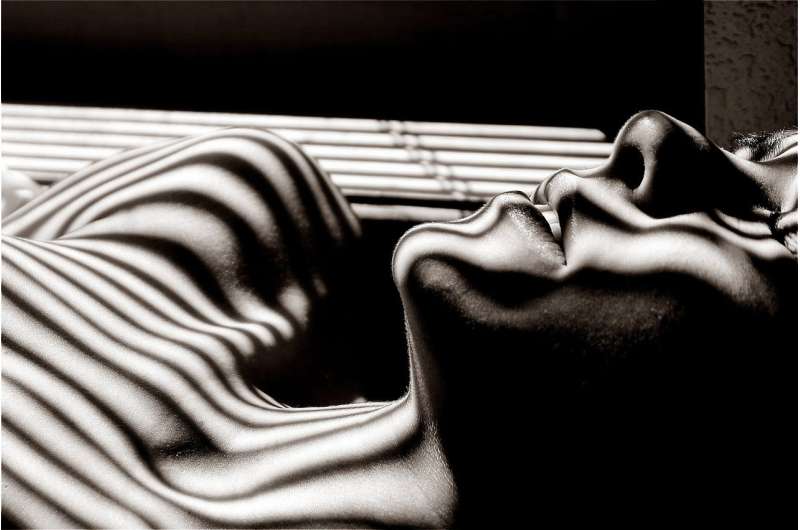Exploring the Phenomenon of Objectless Sleep: The Science of Consciousness Without Content

Scientists are researching rare sleep states characterized by contentless awareness, challenging traditional views on consciousness and expanding our understanding of sleep and awareness.
For some individuals, sleep isn't just a period of rest but can involve a fascinating state of awareness characterized by the absence of sensory content—an experience that challenges conventional notions of consciousness. This unique sleep state, often referred to as objectless sleep, involves a quiet, content-free awareness with no images, thoughts, or sense of self. Such experiences have intrigued philosophers and scientists alike, prompting recent research to better understand what it means to be conscious without specific content.
Historically, Eastern contemplative traditions have described this state. The Indian philosophical school of Advaita Vedanta interprets deep sleep, or 'sushupti,' as a state of 'just awareness,' where one remains conscious but without any object of awareness. Similarly, the Dzogchen tradition within Indo-Tibetan Buddhism teaches meditation practices that recognize the 'essence' of consciousness during wakefulness and sleep, including dream yoga and luminosity yoga. These practices aim to reach a state of 'pure awareness,' where sleep occurs with no thoughts or self-awareness—pure consciousness inside sleep.
Western science, however, has found this concept perplexing, as it appears to defy the typical understanding of consciousness as always being about an object—such as an image, thought, or sensation. The existence of these content-free states raises fundamental questions about what consciousness truly is.
Recent studies have sought to explore these enigmatic experiences. Researchers conducted surveys involving over 500 individuals to identify various forms of minimal or unusual sleep consciousness, including awareness after dreams fade or a bare sense of being asleep. Further, in-depth interviews with 18 participants who reported experiences of objectless sleep used specialized techniques, like micro-phenomenological interviews, to retrieve detailed descriptions of these subtle states.
Findings revealed a spectrum of objectless sleep experiences. Some individuals described states where the self seemed to dissolve or vanish, akin to ego-dissolution experienced in psychedelic states or deep meditative phases. Others described sensations of a faint presence or awareness of nothingness—a void—sometimes accompanied by rudimentary dream remnants. Interestingly, while such states are often linked with meditative practices like dream yoga, evidence suggests that people without formal training or knowledge of these practices can also experience objectless sleep. Moreover, lucid dreaming—the phenomenon of being aware during dreams—was found to be correlated with these content-free states, although not exclusively.
Given their rarity and fleeting nature, inducing objectless sleep experiences poses a challenge. To combat this, researchers developed protocols combining meditation, visualization, and lucid dreaming techniques. Using portable EEG devices, evidence indicated that some of these content-free states could occur during non-REM sleep, a sleep phase traditionally associated with less conscious experience. This opens new avenues for understanding the neural basis of consciousness during different sleep stages.
The investigation into objectless sleep phenomena also contributes to broader debates in consciousness research. The questions surrounding whether consciousness requires content or can exist in a stripped-down form have implications for understanding altered states such as deep meditation, sensory deprivation, or mind-blank episodes. These studies suggest that minimal or contentless awareness might be fundamental to consciousness itself.
In summary, exploring these rare sleep experiences not only broadens our understanding of the sleep-consciousness spectrum but also challenges existing theories about the nature of awareness. As this field develops, it holds the promise of revealing the core mechanisms underlying conscious experience—even in the absence of content.
Stay Updated with Mia's Feed
Get the latest health & wellness insights delivered straight to your inbox.
Related Articles
Limited Use of Genetic Testing for Children with Autism and Intellectual Disabilities in Medicaid Despite Guidelines
Despite clinical guidelines, genetic testing for children with autism and intellectual disabilities remains underutilized in Medicaid, with disparities affecting minority groups. A recent study urges policy and practice reforms to improve access and diagnosis.
Immature Neutrophils Play a Role in Reducing Inflammation by Producing IL-10 During Infections
Research reveals that immature neutrophils help control inflammation during infections by producing IL-10, offering new therapeutic potential for inflammatory diseases.
Research Shows Fathers' Environmental Factors Impact Embryonic Development via Epigenetic Signatures
New research uncovers how paternal environmental exposures influence early embryonic development through epigenetic modifications, highlighting the role of fathers in intergenerational health.
Innovative Blood Test Using SWIFT-seq Offers Less Invasive Diagnosis for Multiple Myeloma
A new blood test called SWIFT-seq offers a less invasive and highly detailed method for diagnosing and monitoring multiple myeloma, potentially replacing painful bone marrow biopsies with comprehensive genetic analysis from a blood sample.



